|
In today’s article I’m going to show you how to make more birdies with your approach wedge shots on par 5 holes. I'm also going to show you the critical wedge distance ranges and the numbers you need to produce to make more birdies in every round to become a consistent par breaking golfer. I think we can all agree that the top male and female tour players make most of their birdies on par 5 holes? In fact the average PGA Tour player birdies about 40 percent of the entire par 5 holes he plays in a season, and the top golfers birdie closer to 50 percent. If you have been following this article series you know that the key to breaking par is based on our simple and easy to understand par breaking formula; < Par = Birdie or Better > Bogey or Worse Basically this means that you need to make more birdies than bogeys to break par, and this is the real challenge of this great game. Most of your birdie opportunities will come on the par 5 holes, and in this article I’m going to share with you a radical mind-set shift that will help you to make more birdies on par 5 holes setting you up to break par more often.  The Par 5 Paradigm Shift: The top male and female tour players all play par 5’s under par and they do this primarily because they believe that par 5 holes are challenging par 4 holes, and their goal is to birdie at least 2 out of every 4 they play. There are no more par 5 holes on your golf course; they are all par 4.5 holes from now on. The par 5 score average of the top golfers on the PGA Tour in 2013 was 4.58 from 225 par 5 holes they played. Think about that for a moment, on average these golfers were 93 under par for about 225 par 5 holes they played that season. To become a leading par breaking amateur or tour professional you need to be able to achieve (or get very close to) this 4.5 standard if you wish to become a competitive golfer who breaks par often. You also need to understand the mind-set and game of someone who plays par 5 holes as par 4.5 holes, because there are a number of factors that will influence how close to 4.5 as an average you will produce, so let’s have a look at them.  Tee Shot Distance on Par 5 Holes. If you average out all the par 5 holes you play in a season what would the average length of the holes be? It is likely to be around 550 yards (503 metres) for male golfers playing in important tournaments and slightly less at club level. The average percentage of distance covered from the tee on par 5 holes by PGA Tour players in 2013 was 52 percent. What this means is that if they are playing a par 5 that measures 550 yards (503 metres), they will hit their tee-shot at least 286 yards from the tee, which is 52 percent of the total distance of the hole.
Tour players fly their 3 wood between 220 and 250 yards (200 and 229 metres) with the long hitters able to fly their 3 woods consistently into the 250 yard range. Have a look at the par 5 16th hole at T.P.C Sawgrass below, where The Tournament Players Championship is played every year, and you can see the distinct advantage distance gives the longer hitters. A tee-shot of 290 yards on this hole will leave a second shot of 225 yards to the middle of the green. If you were in contention in this tournament a birdie on this hole (your 70th hole) could really help you, by supplying momentum and motivation for playing the last 2 holes; the treacherous par 3 17th with its island green, and the long curve-linear 18th hole par 4 that is bordered along the left with water, from in front of the tee, and all the way to the green. Many of the par 5 holes on tour are not designed to be receptive to second shots from a long way out unless you hit a truly great shot. For example, the neck of the fairway leading into the green surface on the 16th hole at T.P.C Sawgrass is just 10 yards wide, with water cutting in tight on the right, and a well placed pine tree on the left. So even though the majority of tour players playing in the Tournament Players Championship can reach this green in 2 shots, many prefer the third shot option of relying on an accurate approach wedge shot to the pin, which is tucked in the right side of the green on the last day. Now the lay up third shot must be accurate and layed up to the distance that the player is at their best. What this means is that each player has one or two distances that they are very accurate at, both in terms of direction and distance. How would you like to be playing your second shot from 225 yards out into a green designed like the one below? This is a view of the 16th green at T.P.C Sawgrass from behind the green, and you can see that going for it with your second shot is fraught with danger. Notice in this image that I have highlighted two lay up zones in yellow and blue. 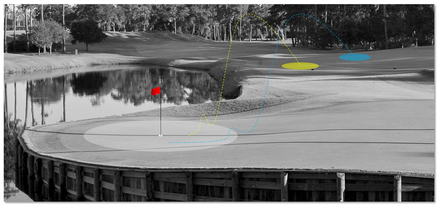 Click the image to make it larger Click the image to make it larger Your 2 Colour Wedge Zones When you play par 4.5 holes like the 16th at T.P.C Sawgrass, you need to know your two wedge zones that you can hit your approach shots accurately from. With this knowledge you can be confident that from these distances you will hit your approach wedge shots close enough to the hole to give you a good chance of making the putt. The top tour players all have their favorite distances that they play their approach wedge shots from, and you should too. The key to understanding this is to realize that there are basically two types of approach wedge shots that you must become really good at;
The Yellow Zone - Short Arm-Swing Approach Wedge When you have to hit shots to tight pins on par 4.5 holes, you will need a short arm-swing approach wedge technique that has a range of between 50 and 75 yards (46 to 68 metres). Somewhere in this range you need to develop a go-to wedge shot for the tight pins that are tucked behind obstacles like bunkers or water. Your arm-swing length for this shot will have your hands just above your right hip in the back-swing, and this is one of those shots that is never practiced enough by elite golfers and it shows in their results when hitting shots from 50 to 75 yards. It is challenging to learn this shot because most of the strokes you make are made with longer arm swings and this stroke will feel very short and uncoordinated to begin with, so it will take you some practice to learn the length of the stroke and the ideal tempo for it. But hang in there because once you master this stroke you will be able to confidently get your approach shots close to hole consistently, especially when pins are tucked in tight. The Blue Zone - Long Arm-Swing Approach Wedge When you are further out from the green at the 75 to 100 yards (68 to 91 metres) range and you have to hit to tight pins you will need a long arm-swing approach wedge technique. This stroke has the handle level with your right shoulder joint or just above, is a stroke length preferred by most tour players. Remember that your wedge shot effectiveness determines how many birdies you make on par 4.5 holes. How to Practice It Wedge it closer to the hole consistently and the probability of you making mores putts goes up. The best way to practice these 2 strokes is to first determine how far you can consistently fly the ball with your short arm-swing technique and your long arm-swing technique. Hit a minimum of 5 sets of 10 golf balls (50 shots) and measure the carry distance of each shot with a laser and then average the distance out. Make sure that your arm-swing is consistent by working closely with your instructor or a friend who can provide feedback that your arm-swing is consistent and the correct length from shot to shot. Once you know how far your golf shots fly on average with both stroke lengths you can test your distance control by hitting at least 5 sets of 10 shots (50 shots) into a green and using a tape measure perform a proximity to the hole check to determine how far on average you are hitting your shots from the hole.  The Short Arm-Swing Technique from 50 to 75 Yards The Short Arm-Swing Technique from 50 to 75 Yards How Good Are the Tour Players? In the final round of the 2013 Northwestern Mutual World Challenge Zac Johnson hit his second shot into the water on the 444 yard par 4 18th hole. So he took his ball back to the drop zone and was left with a shot of about 70 yards to the pin. Now at this approach wedge distance range (50 to 75 yards) Zac's proximity to the hole is 10 feet 7 inches, (from this range in 2013 he had 20 attempts and converted 25 percent of them for birdie) so he was pretty confident that he could hit it close enough to get the ball up and down for bogey and put the pressure back on Tiger Woods. He did better than that because he holed the shot and then went into a playoff with Tiger and beat him! That's the real power of a great wedge game, because it can turn par 5 holes into par 4.5 holes. 50 to 75 Yards So how good are PGA Tour players from these distances? Well, from the 50 to 75 yards (46 to 68 metres) range the top 15 players on the PGA Tour (those who made the most birdies on par 5 holes in 2013) hit their short arm-swing approach wedge shots on average just 13 feet 8 inches from the hole, or around 4 metres away. Now this might not seem very close to the hole, but on average it really is very good, and it means that they are continually facing putts from a range that when their putter is hot they make lots of them. 75 to 100 Yards When they hit their shots from the 75 to 100 yards (68 to 91 metres) range their proximity to the hole increases just a little to 16 feet 2 inches, or around 5 metres from the pin. Consider also that on many of the par 5 holes where they played a 3 wood to the green, many times they hit their shots much closer than 50 yards from the pin during the season, and their green-side scrambling skills are so good that in 2013 (when they were hitting second shots from 250 yards to 275 yards or 228 to 251 metres away) their birdie or better result was an outstanding 62 percent for the previously mentioned par 5 birdie leaders group! So there you have it, the par 5 now becomes a par 4.5, and your job is to develop your golf skills around these key concepts, and with practice and determination you will set you up to make more birdies than bogeys, and a lot more pars in each round.
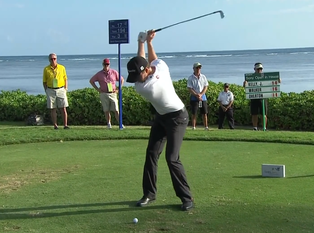 Every year a new group of golf score warriors makes it onto one of the PGA and LPGA tours to test their golf skills against the best golfers in the business. And what’s interesting is that even though they all swing the golf club differently, they all have one thing in common; the knowledge of how to break par, and ability to make par more than 60 percent of the time when they miss a green in regulation from around the green, and particularly on par 3 and par 4 holes. You see the key to breaking par consistently is to maintain par at all costs, and without superior short-game recovery skills you will never be able to achieve this goal. The trouble is with so much emphasis of perfecting golf swing mechanics today, the worrying thing is that upcoming amateur golfers never get enough hours of practice under their belt developing their scoring ability. Don't let this be you. In today’s article (part 3 of our series) I’m going to share with you a simple and easy to remember formula that you need to understand which is the key to breaking par often when you miss greens on par 3 and par 4 holes and the break par zone that determines how many pars or better you make in each round. Here's the formula you need to understand and remember; % of Pars Made = Distance of First Putt Isn't that easy and simple to understand and remember? Hit it closer to the hole consistently when you miss a green in regulation and you will make more pars.  Can you get your ball into the hole in 2 strokes from this position consistently? Can you get your ball into the hole in 2 strokes from this position consistently? Success at making par when you miss the green truly gets down to how far on average you hit your first putt from. The best golfers on all the pro tours hit it closer to the hole on average than their fellow competitors. It is as simple as that! Basically you need to be able to do three things really well when you miss greens on par 3 and par 4 holes in regulation if you want to make a high percentage of pars.
Simple enough right? No, actually its not. This is where we see the biggest difference in players that can score consistently under par to those that don’t. The consistent under par scoring golfers all have the ability to consistently make pars when they miss the greens on par 3 and par 4 holes from all types of lies, in all types of situations, most of the time. Okay, so you are probably wanting to know just how good you have to be to make pars consistently when you miss the green and finish up around the green or in the bunker right? Well, let’s go back to the formula % of Pars Made = Distance of First Putt and start from there. Percentage of Pars Made > 65 % I’ve already shared with you that you need to make at least 12 pars in each round (which is 66.7 percent of 18 holes) to become a par breaking golfer, and our simple formula tells us that to do this consistently we need to get the distance of the first putt closer to the hole whenever we miss the green. Now I know that’s obvious, but how close do you need to get it? That’s really the key question here, and in our experience few advanced and elite golfers (pro's and amateurs) really understand the critical distance range that you must continually hit your recovery shots into to make a high percentage of putts that convert into pars or better. At Pro Tour Golf College we call this the Break Par Zone. Distance of First Putt < 10 Feet (3 Metres) So let’s have a look at how many putts are made by PGA Tour professionals over a season to start with. I think we can agree that top level professionals from around the green and in close proximity to the pin will hit their recovery shots within 10 feet (3 metres) of the pin on average?
The Shocking Discovery So you can see from the numbers above that there is an exponential improvement as you get closer to the hole. But take a look at what we discovered when you compare a 7 foot putt and a 5 foot putt; there's a staggering 30 percent difference! When these guys hit their golf shots 24 inches closer to the hole, on average their putting performance improves by a whopping 30 percent. 24 inches Closer to the Hole = 30% Better I think you can start to see that these PGA Tour players are really good at making putts from inside 7 feet of the hole, and this knowledge should help you to understand what you are required to do when you hit green-side recovery shots to save pars on par 3 and par 4 holes. Basically you need to hit your chip, pitch and lob shots inside 7 feet of the hole when you play your recovery shots from good lies around the green, and you need to hit it inside 10 feet when you hit your recovery shots from more challenging lies. Our formula of % Pars Made = Distance of First Putt should make complete sense to you now. Your scrambling results are directly influenced by your first putt distance from the pin and your putting effectiveness - particularly inside of 7 feet. 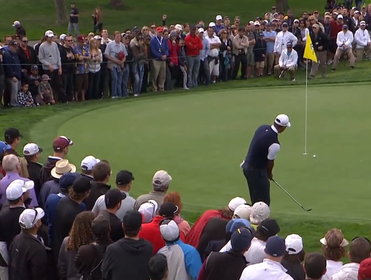 Scrambling 10 to 20 Yards (9 to 18 metres) from the Pin Scrambling describes the percentage of time that you miss a green in regulation, but you still make par or better when your birdie stroke is taken. So what this means is that your birdie stroke is your 2nd shot on a par 3; your 3rd shot on a par 4, and your 4th shot on a par 5 hole when you miss a green in regulation. So let's take a look at how good the tour players are when they are scrambling for par or better within 30 yards of the edge of the green. To start with, we are going to focus on recovery shots close to the edge of the green from 10 yards (9 metres) to 20 yards (18 metres) of the hole. Now keep in mind that anytime we are describing the statistics of tour players around the green (including bunker shots) we are talking about all the shots they take during a season, and these shots are played from every type of lie imaginable. The recovery shots will range from straight-forward shots where the green is at the same height as the ball, to holes where the green is much higher or lower than the ball. And as I mentioned earlier, the putts are flat and level through to extreme up-hill and down-hill, and side-hill putts. So what is the percentage of pars saved from the 10 to 20 yards (9 to 18 metres) distance range of the pin by players on the PGA Tour? Par or Better > 10 Yards and < 20 Yards = +/- 60 % Recovery Shot Proximity to Hole On average how close are these great golfers hitting their green-side recovery shots to achieve a 60 percent result? Well, Steven Bowditch ranked number 1 in proximity to the hole from 10 to 20 yards of the pin in 2013 hit his recovery shots on average just 5 feet and 4 inches from the hole, and at the other end of the scale Eric Meierdierks who ranked 180th hit his recovery shots 9 feet and 1 inch from the pin. So we can safely say that on average these guys are hitting their recovery shots to around 7 feet from the pin on average from 10 to 20 yards of the pin. What this tells us (and what we know) is that the more successful golfers (those that make more cuts and more money) will hit their recovery shots on average closer to the hole. Proximity to Hole > 10 Yards < 20 Yards = +/- 7 Feet (60%) How about from a little further out from the pin, what are the numbers when these tour golfers hit their recovery shots from 20 to 30 yards (18 to 27 metres) from the edge of the green? There's a slight drop in performance as you would imagine, and from the 20 to 30 yards range they achieve a scrambling average of 52 percent, and in proximity to the hole from this range Steve Stricker ranked number 1 hitting his recovery shots on average 6 feet and 5 inches from the hole. At the other end Dustin Johnson ranked 180th hitting his recovery shots 13 feet 3 inches from the pin. So on average these guys are hitting their recovery shots about 9.5 feet from the pin. You can see that hitting your green-side shots into 10 feet (3 metres) is crucial if you make a higher percentage of pars per round, and set yourself up to break par more often. Proximity to Hole > 20 Yards < 30 Yards = +/- 9.5 Feet (52%)  On average tour players will hit bunker shots to within 10 feet from this distance On average tour players will hit bunker shots to within 10 feet from this distance Scrambling from the Bunkers This is the percentage of time that you miss a green in regulation, but you still make par or better when your birdie stroke is taken from a greenside bunker. How many "up and downs" are these guys making when they miss the green with their approach shots from the bunkers? The number is 52 percent on average from the results of 180 players in 2013. What about the average distance to the hole after a tour player hits their ball onto the putting surface from a bunker situated within 30 yards (27 metres) of the edge of the green? Again we've based our averages on 180 tour players competing on the PGA Tour in 2013 and the distance is around 10 feet of the hole. When you think about it this is quite exceptional because it suggests that from all types of bunkers and all types of conditions they will get the ball to within 10 feet of the flag consistently. And we know that at the very worst from 10 feet they will make 4 putts out of 10. Sand Proximity to Hole < 30 Yards (27 Metres) = 10 Feet (52%) Notice that all these results fall within the range of 45 to 65 percent from within 30 yards of the edge of the green? The thing to understand here is that they are averages, and some days they hit it a little further away from the hole than other days, and this reflects in the score variation from round to round. You should now understand that at the very least you need to get your recovery shots into this 10 foot (3 metre) Par Breaking Zone consistently to have any chance of achieving 65 percent or greater pars made in each round. This is the key to your success at breaking par more often. You need to practice your green-side skills (including your bunker shots) at least 70 percent of the time you have available to practice and you should practice your recovery shots from every type of lie imaginable so you can learn how to turn more of your bogeys or worse into pars or better.
"In every round you play, and like every other golfer, you are using your knowledge, skills and experience to craft a golf score over 18 holes. Basically, you are compiling an amount of pars, birdies or better and bogeys and worse over 18 holes." Last week I shared with you the par breaking formula of < Par = Birdie or Better > Bogey or Worse. Basically the idea is that you need to make more pars in your round and less bogeys and worse compared your birdies and better to break par. Hey look, I know it’s not rocket science, but it is important that you come to understand this formula before you start to dig into your scoring performance to identify the areas of your game that are keeping your score average higher in tournaments. In this article we are going to focus on how to make more pars on par 4 holes and we are going to look at an extremely important and little known tee-shot strategy that will determine whether you make more or less pars in every round. When you apply this simple strategy you will increase your greens hit in regulation average and make more pars in every round you play. Success in golf is equal to your competitive score average and you need to build a game that gives you the best chance every time you play of breaking par. In every round you play, and like every other golfer, you are using your knowledge, your skills and your experience to craft a golf score over 18 holes. Basically, you are compiling an quantity of pars, birdies or better and bogeys and worse over 18 holes. In any round of golf you play, you will play;
As you know, every golfer from novice to pro starts on the same score and it is how you perform on these par 3, 4 and 5 holes over the course of your round that will determine the score you will produce. The top male and female tour pro’s play par 3 holes in just under to just over par over a season, and they do the same for the par 4 holes. This is where you make most of your pars in a round. Par 5 holes are another matter entirely, and this is where the top tour pro’s make inroads into scoring under par. Have a look at the image below and you will see what I mean. The image below shows PGA Tour professional’s par averages from the 2013 season for par 3, par 4 and par 5 holes for golfers ranked 1, 50 and 100 and you can see that they score around par for par 3 and 4 holes for a season (except for the number 1 ranked golfers) and they score well under par on the par 5 holes.
How to Improve Your Par 4 Par's Made Average In important men's amateur tournaments and also on the professional golf tours because every golf course measures more than 7000 yards in length, and to improve your par 4 average you need to get your tee-shot distance average into the 60 to 70 percent zone consistently and particularly on the longer holes to give yourself a better than average chance of hitting the green in regulation. I'm sure that you'll agree that this is a very different way of looking at hitting tee-shots, because the emphasis is normally on how far a golfers hits their shot from the tee. And tee-shot distance is very important, but we want you to look at it from the perspective of how far you hit tee-shots on holes where it is important to hit the green with your second shot. This means that if you hit a tee-shot on a hole measuring 495 yards (453 m), 60 percent of the distance will leave you an approach shot of 198 yards (181 m). But if you hit your tee-shot 65 percent of the distance, you would be left with an approach shot of 173 yards (158 m). You can see that a 5 percent distance increase translates into an extra 25 yards (23 m)? How to Improve Your Greens Hit in Regulation Average Here's where it gets real interesting though, have a look at the image below and you can see the greens hit in regulation averages of PGA Tour golfers from less than 75 yards (68.5 m) to greater than 200 yards (183 m). This is the average of 180 golfers competing on the PGA Tour in 2013. 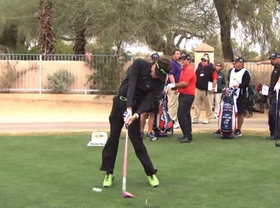 When you study these numbers I bet you are a little surprised at how many greens they actually hit compared to what you might have thought? I'm sure that you probably imagined that they hit more greens in regulation right? So using our example of hitting your tee-shot 65 percent of a hole measuring 495 yards, you would be hitting a second shot of 173 yards, and the average PGA Tour golfer would hit the green around 6 times out of 10 probably using a 6 or 7 iron depending on the conditions. Hitting your tee-shot 60 percent of the total distance of a 495 yard par 4 and the tour player would hit the green around 5 times out of 10 on average, using a 4 or 5 iron. How about you, how many greens would you hit in regulation on average if you were in the same situation? A lot of emphasis is placed on hitting fairways from the tee, but the average amount of fairways hit by PGA Tour golfers is approximately 58 percent. If they play a course with 14 holes that they can hit tee-shots on, (10 par 4's and 4 par 5's) they will hit on average 8 to 10 fairways out of 14. Like green hitting, the fairways tour players hit are less than you might think, however when they do miss fairways, most of the time they don't miss them by much, and they are very good at hitting their approach shots from light rough onto the green a good percentage of the time. The qualification here is that they have to hit their tee-shots into the 60 to 70 percent zone on the longest par 4 holes so that their approach shot from the rough is being played with a medium to short iron. The longest hitters on tour play many of their approach shots from the rough, but it doesn't affect their score too much because their approach shot if often a 9 iron, pitching wedge or shorter. 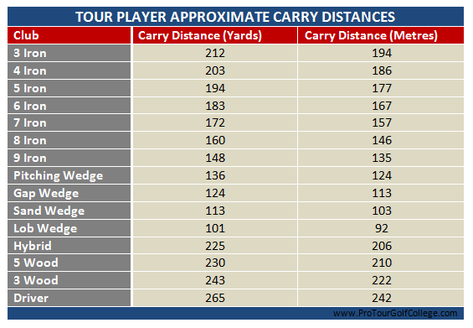 Click on the chart to make it larger Click on the chart to make it larger The chart on the right shows you how far the average tour player hits their golf shots (in yards and metres) based on our assessments of players working with us using trackman and flightscope. This is where it will help you to understand how they make as many pars as they do in each round. Driving the ball in the 60 to 70 percent zone off the tee consistently will mean that when you play the longer par 4 holes you can still reach the green with a short to medium iron in most cases. This means that you will hit a higher percentage of greens in regulation because as you can see in our greens in regulation example above, that the percentage of greens hit drops dramatically when you start hitting second shots into par 4's with your longer irons and hybrid clubs. For example, let's say that you drive your ball 240 yards (219 m) off the tee on a 430 yard (393 m) par 4 hole. You would have hit your tee-shot 56 percent of the total distance of the hole and you will be playing your second shot from 190 yards, (174 m). Now if the best players in the game are missing about fifty percent of the greens in regulation on average, then you are also likely to miss at least fifty percent of the greens you attempt to hit and maybe more. Take a look at the scorecard below for The Tournament Players Championship played at TPC Sawgrass in Ponta Vedra, Florida. You can see that I have averaged out the length of the Par 3, Par 4 and Par 5 holes at this famous golf course (which measures well over 7000 yards from where the tour players tee-off) to give you an idea of the distances of the holes and the distance of the second shots they would be hitting into the par 4 holes there. Obviously the longer the hitter you are (whilst still hitting between 55 and 65 percent of fairways) the shorter the shot, however, you don't have to hit the ball as far as Bubba Watson or Tiger Woods does to be competitive on a long golf course like TPC Sawgrass as long as you can hit your tee-shots into the 60 to 70 percent distance zone consistently. Many of the champions at The Tournament Players Championship are not the longest hitters in the field, but every one of them can hit the ball into the tee-shot scoring zone (see below) and this is the key to maximizing the amount of pars you make on 430 yard par 4 holes.  Do you know your tee-shot distance zones? Do you know your tee-shot distance zones? How Far Do I Have to Hit My Tee-Shots to Get Into the 60 to 70 Percent Zone? So the question you are probably asking yourself is "how far do I need to hit my tee-shots on par 4 holes to get into the 60 to 70 percent tee-shot scoring zone?" Good question; and to help you to get the answer to this important question we have gone to the trouble of calculating all the tee-shot distances from 200 to 320 against hole lengths of 300 to 450 for you so you can work out where your tee-shot zone should be. The distances in the Percentage of Distance Covered Chart (Par 4 Holes) can be yards or metres (depending on your preference) and we have included tee-shot distances from 200 yards/metres to 320 yards/metres, and the par 4 hole distances are from 300 yards/metres to 450 yards/metres. Based on the information I've shared with you so far you can see that the average length of par 4 holes at The Tournament Players Championship (Stadium course) is 428 yards (391 m) and using our Percentage of Distance Covered Chart (above) you will notice that if you hit your tee-shots into the 60 to 70 percent zone you will be hitting your tee-shots in the 260 to 300 yards (238 to 274 m) range from the tee. What's interesting about this is that the 2006 through to 2013 winners of this important championship all fit into the 60 to 70 percent zone with their average tee-shot length in yards. Every male and female golfer playing on a professional golf tour can hit their ball into the 60 to 70 percent zone consistently and this enables them to have a better than 50 percent chance of hitting the green in regulation setting themselves up to make pars on the par 4 holes. Download our percentage of distance covered chart for par 4 and par 5 holes and study it and work out how far on average your tee-shots are travelling down the fairway. If you are not getting into the Tee-shot scoring zone yet, get to work with your golf instructor on improving this situation so you can make more pars on par 4 holes edging you ever closer to breaking par consistently.
“Any sufficiently advanced technology is indistinguishable from magic.” - Howard C Clark I don’t know any serious amateur or professional golfer who doesn’t want to learn how to break par often. But learning how to break par for many golfers seems to be as mysterious as a great magic trick that has you scratching your head wondering how the magician just pulled off the great illusion before your very eyes. Breaking par can truly seem like a magic trick but believe me it isn't, because it is achieved by many golfers from young to old who have developed their game to a very high standard. These golfers employ certain specific strategies and skills that set up low scores more often, and you can learn how to as well.  First You Need the Par Breaking Mind-Set The one thing all self-made millionaires have in common is that they want to be rich, they want to earn lots of money because they are motivated by the things that lot’s of money can give you; personal security, freedom from bills, bright shiny objects, lots of vacations etc. And the key to their success is that they think about being rich all the time; they think about growing their wealth; and they go to work on it every single day learning the specific skills, knowledge and strategies that makes it possible. They have what is called "the millionaire mind-set." In other words they focus their energy entirely on generating and increasing their wealth, and from there they work out how they will get it done! Turn the Idea of Breaking Par into a Belief To be a par breaking golfer you also need to think about breaking par often. It must be forefront in your mind and you need to be continually finding creative ways and means to achieve it. This is what every low scoring golfer does; they continually focus their energy on reducing their golf scores by reducing the mistakes in their rounds that makes it more difficult to break par, and they seek out the teachers, coaches and mentors that can help them achieve it. They believe that they can break par often, it is not a fantasy, it is reality because they make it so. And it is not something only mature golfers can do? There are many junior golfers under the age of 15 who can break par; so it is not a coming of age thing, it is possible for any serious golfer to learn how to break par with the right level of knowledge, skills and consistent practice.
Increasing your par average is the first key to breaking par often, and you will discover that crossing the 12 pars threshold will take you into new territory with your golf scores and will set you up to achieve your goal. Look at it like this; if you have 9 pars in a round, 3 bogeys and a double bogey, you would have to have 6 under in 5 holes to break par. You would need to have something like 4 birdies and an eagle, which is possible, but not probable. More pars per round just makes sense, and it also makes it easier to score low, doesn't it? The fewer pars you have in a round the less likely it is that you will break par. So how do you increase the amount of pars you generate in a round of golf? The simplest way is to reduce your bogey average and worse, and also increase your birdie or better average. Now I know that's obvious, but remember the par breaking mind-set I shared with you earlier? You have to focus all you energy on reducing bogey or worse in your rounds, and you need to build your game improvement strategies from this stand point to start with. Here's the key to remember; you should aim to have no more than 2 to 3 bogeys in any round of golf you play, and you need to almost completely eliminate double bogeys and worse from your game. Double bogeys and worse should rarely happen if you are going to be a par breaker. 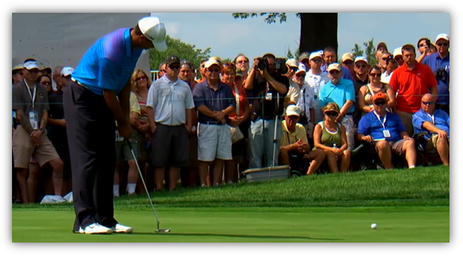 What's Your Birdie to Bogey Ratio? On the PGA Tour the bogey average (2013 season) for the player ranked 1 was 1.96 bogeys on average per round, (just under 2 bogies) and for the player ranked 180 it was 3.4. The birdie average (2013 season) for the player ranked 1 was 4.22 birdies on average per round and for the player ranked 180 it was 2.80 birdies per round on average. Can you see a correlation between the amount of bogeys they make against birdies? If a golfer has 3.4 bogeys or worse per round and 2.8 birdies or better he will play over par. Now you are probably thinking that this is far from easy to do, and you would be right, but you need to understand that to break par often you will need to reduce the mistakes (bogeys and worse) that you make in every round you play. Here’s a really simple way of working out your bogey to birdie ratio so that you understand where you are in this critical game improvement area. Total birdies or better divided by total bogeys or worse. Let me show you what I mean. Tiger Woods ranked 3rd in 2013 for the birdie to bogey ratio statistic, and in the 61 tournament rounds he played on the PGA Tour he made 252 birdies or better, and just 163 bogeys or worse. 253 is a bigger number than 163 right? More birdies than bogeys right? When you divide 252 birdies or better into 163 bogeys or worse you get a result of 1.55. Remember that ranked him 3rd on the PGA Tour that year. If you go down the list from Tiger to Carl Petersen, Carl ranked 138 in this statistical category, with his birdie or better score 274 and his bogey or worse score also 274 resulting in a score of 1.00. This means that his birdies or better result was cancelled out by his bogeys or worse result. Go even further down the same list and Sean O’Hair ranked 177 in this important category with a birdie or better score of 173 against his bogey or worse score of 209, resulting in a .83 over par result. More bogeys than birdies. Can you see how important this is? I think you can see that the idea is to create more birdies or better per round compared to your bogeys or worse score if you want to break par often. Here’s a simple way for you to find out what your ratio is. At Pro Tour Golf College our formula for breaking par is described like this; < Par = Birdie or Better > Bogey or Worse You can create a table like the one below and track your pars and birdies or better in each round against your bogeys or worse and then using the par breaking formula work out where you stand currently. In the example above one of our golfers at Pro Tour Golf College had a Birdies or Better result of 27 and a Bogeys or Worse result of 45. When 27 is divided into 45 you get .60. (27 Birdies or Better ÷ 45 Bogeys or Worse = 0.60) I think that you’ll agree that this simple way to analyse your pars, birdies, bogeys and worse will help you to understand where your weakness lies. And when you understand your weaknesses you can make progress with well thought out and useful practice strategies. You see, before you go pulling your golf swing apart or changing some other aspect of your golf game take the time to understand your results against par and then work backwards from there. Next week in part 2 we'll take a close look at the way you should play the Par 3's, Par 4's and Par 5's to increase your par and birdie average and decrease your bogey and worse average by identifying the critical shot-making formula and key strategies that you need to learn that will help you to move your golf scores from over par and down into red numbers.
|
Archives
June 2019
|
Proudly Supported By
Copyright © 2011 - 2018 Pro Tour Golf College
Website Managed By Golf Performance Media
All Rights Reserved
Website Managed By Golf Performance Media
All Rights Reserved





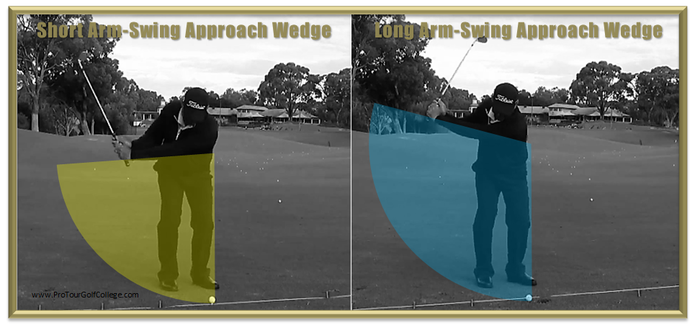
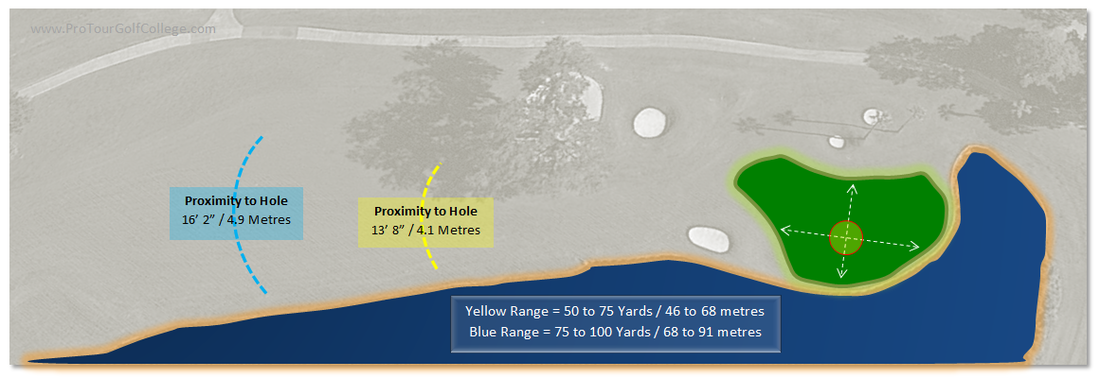




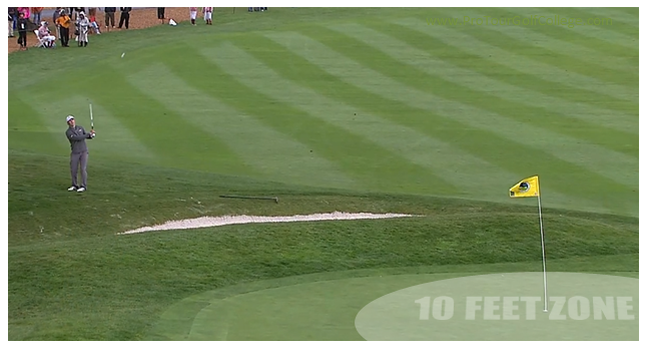

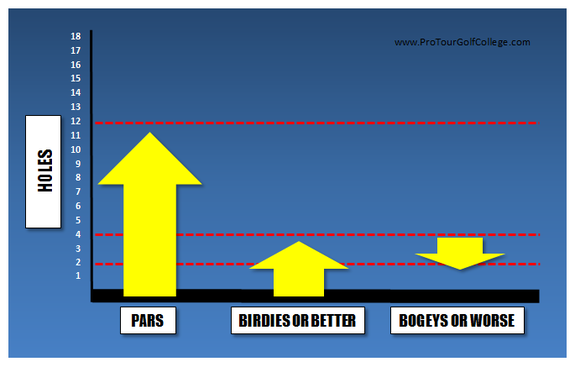












 RSS Feed
RSS Feed



